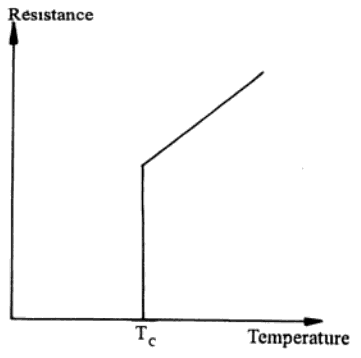Table of Contents
Superconductivity:
Professor K. Onnes in 1911 discovered that certain metals and alloys at very low temperature lose their resistance to zero value. This phenomenon is called superconductivity.
The temperature at which the resistance of material falls to zero is called the Transition temperature or critical temperature denoted by Tc. The substance is found to behave as a normal conductor above Tc, but as it is cooled to the temperature Tc, it makes a transition to the superconducting state as shown in the figure. Zero resistance means that if the momentary current is induced in a ring of superconductor, it keeps on flowing forever without any attenuation, i.e., without getting any decrement in its value. Certain other properties of the material show remarkable changes at a superconducting state, for example, specific heat capacity increases abruptly, thermal conductivity changes and thermo-electric power vanishes. Another spectacular change in non-magnetic materials is found; when they are brought to their transition temperature they start behaving as perfect diamagnetic material. This phenomenon is called Meissner’s effect.

Cause of Superconductivity:
The cause of superconductivity is that the electrons lose their independence in a superconductor. Free electrons constitute a cooperative cloud of electrons and this cooperative cloud of electrons makes no collisions with atoms/ions of superconductor and hence there is no resistance.
Applications of Superconductivity:
- Super conductors are used in making very strong electromagnets.
- Superconductivity is playing an important role in research work.
- It is used to produce very high speed computers.
- Super conductors are used for the transmission of electric power.









Comments (No)